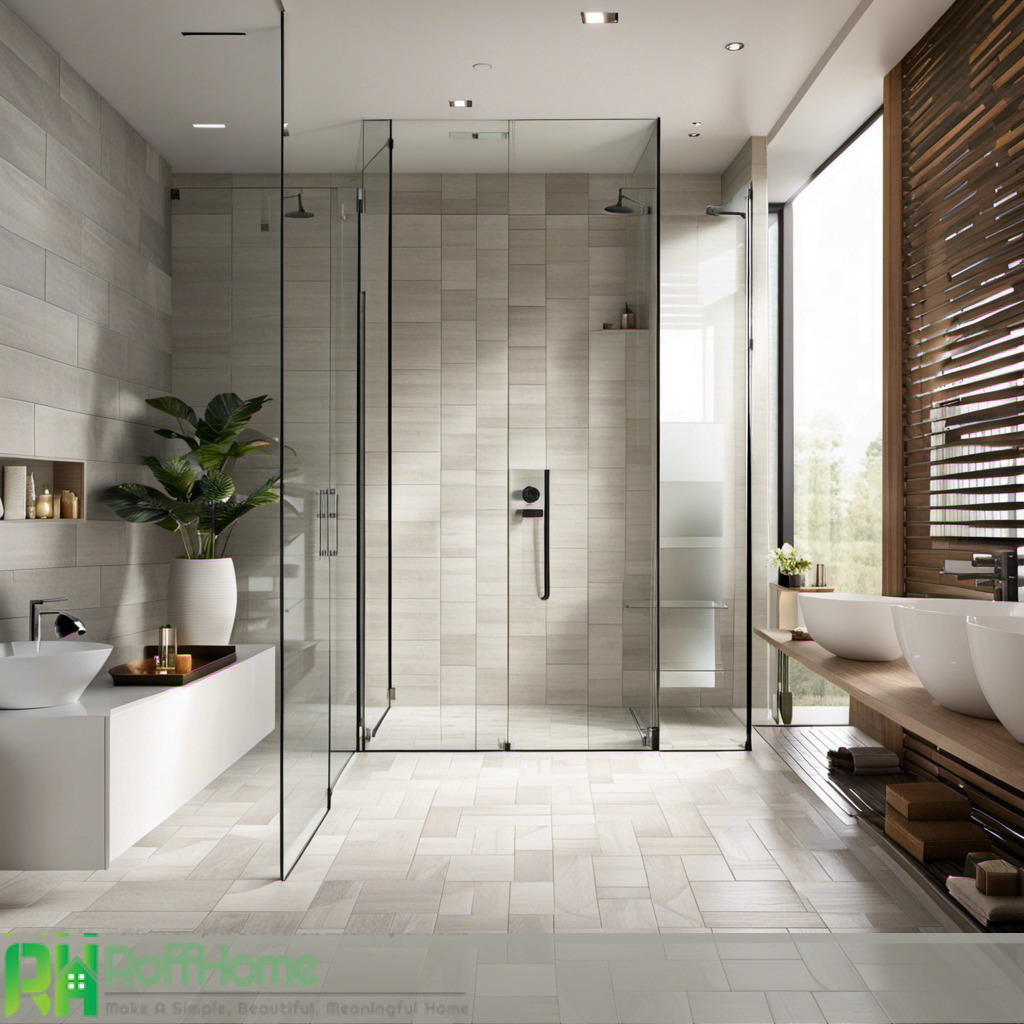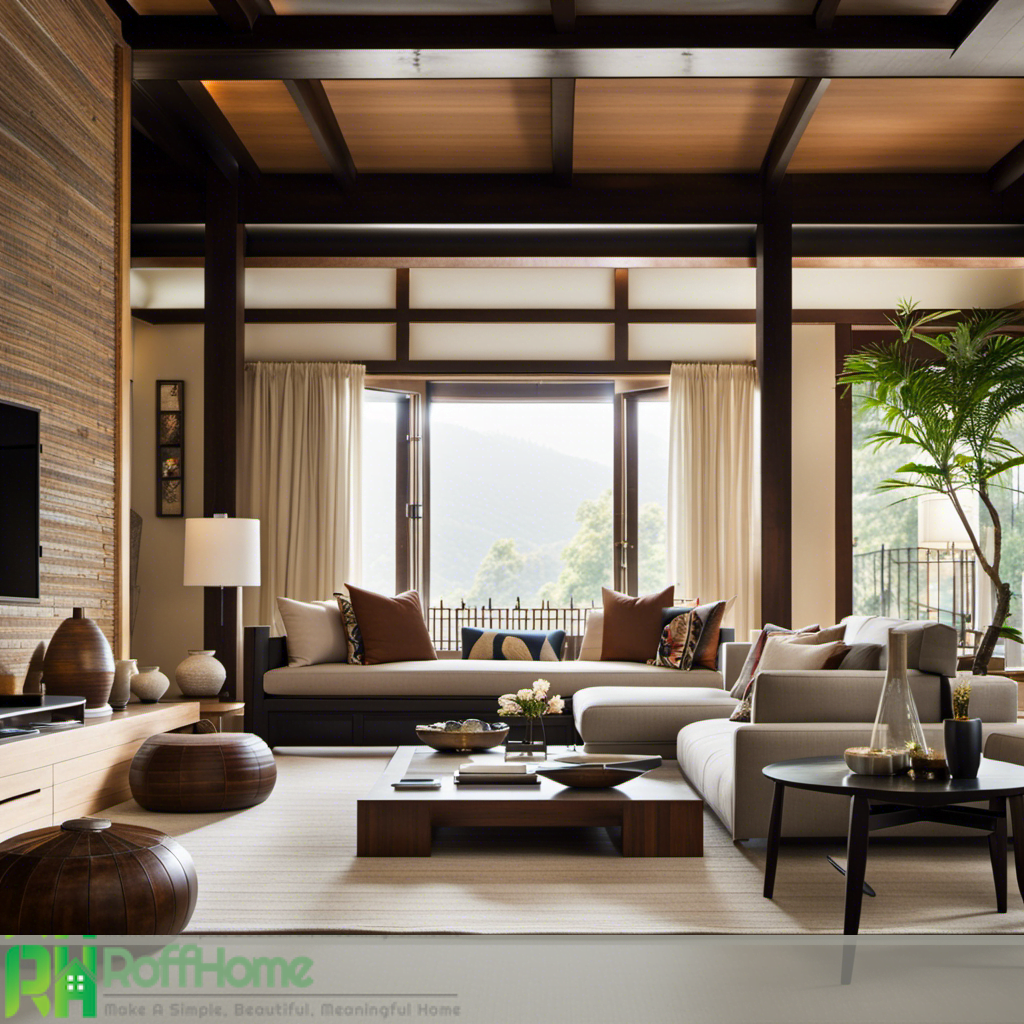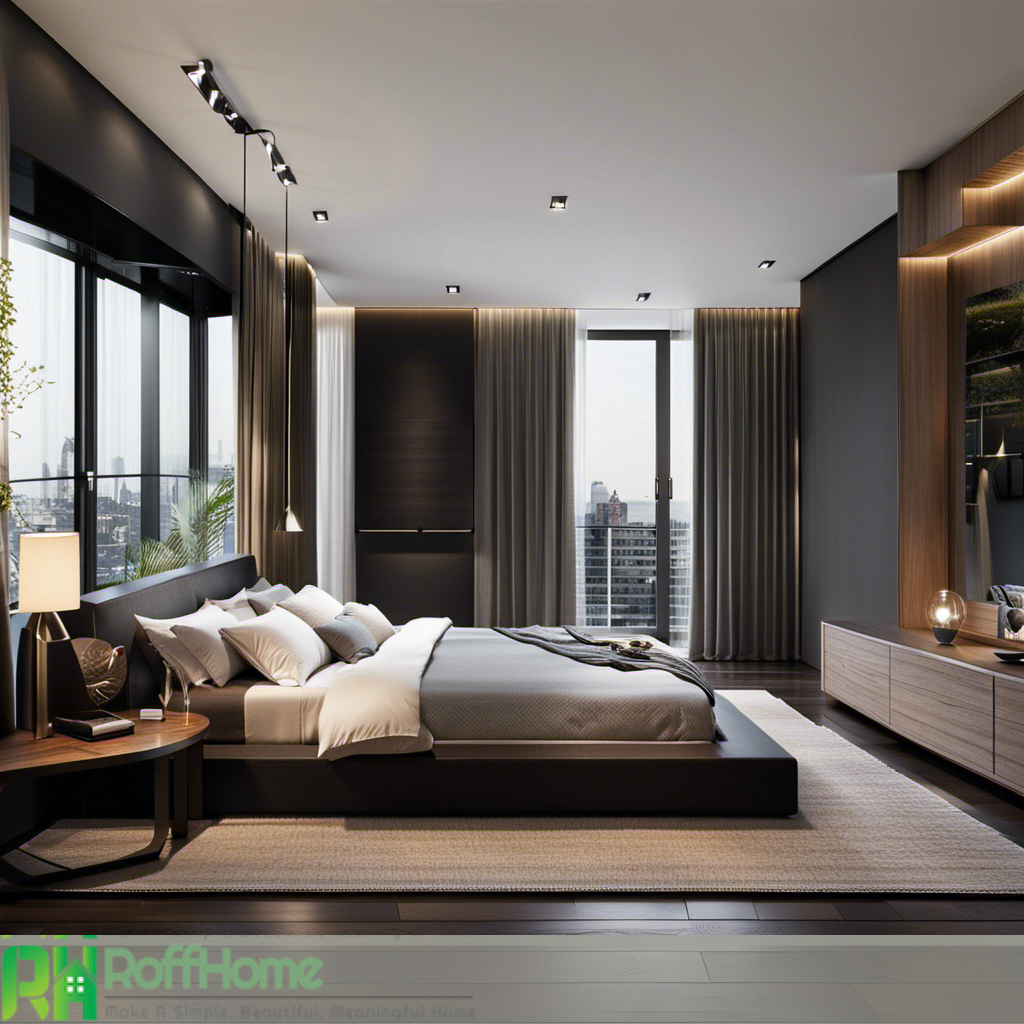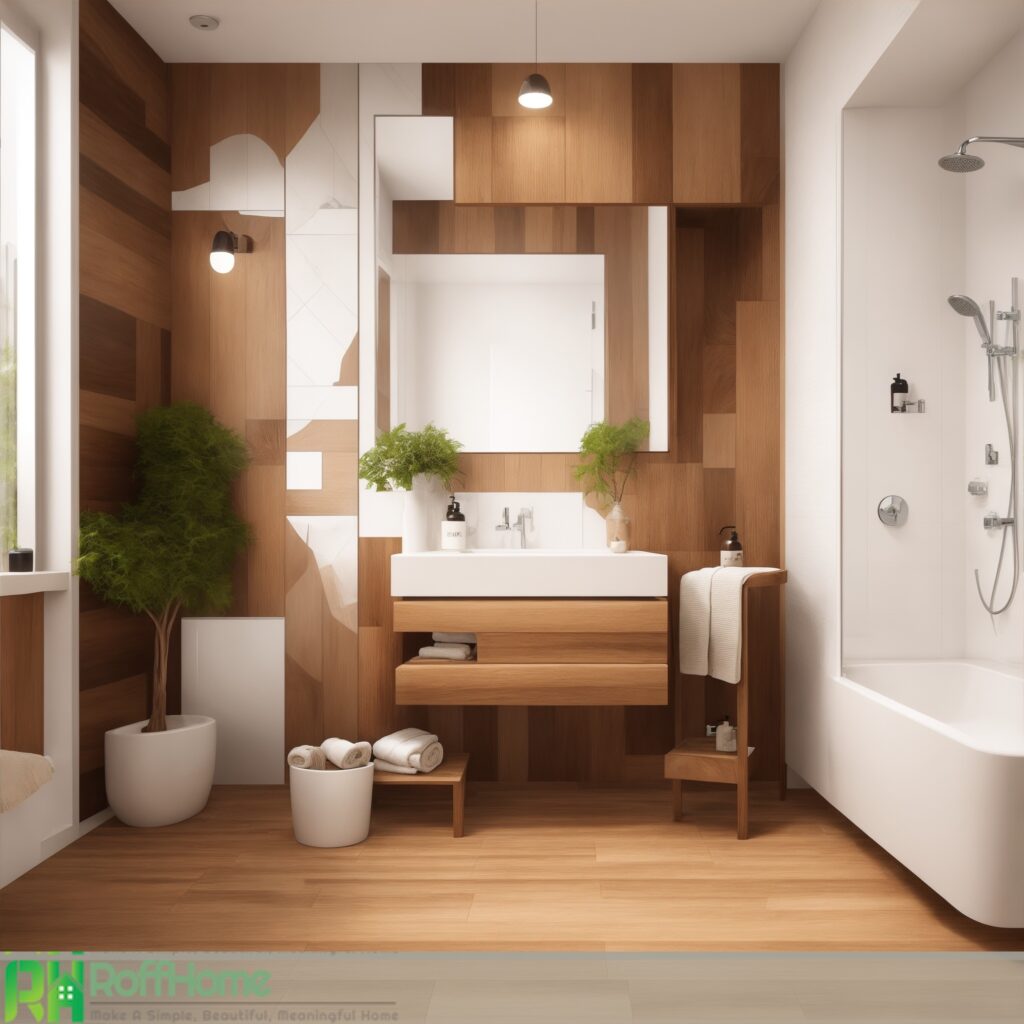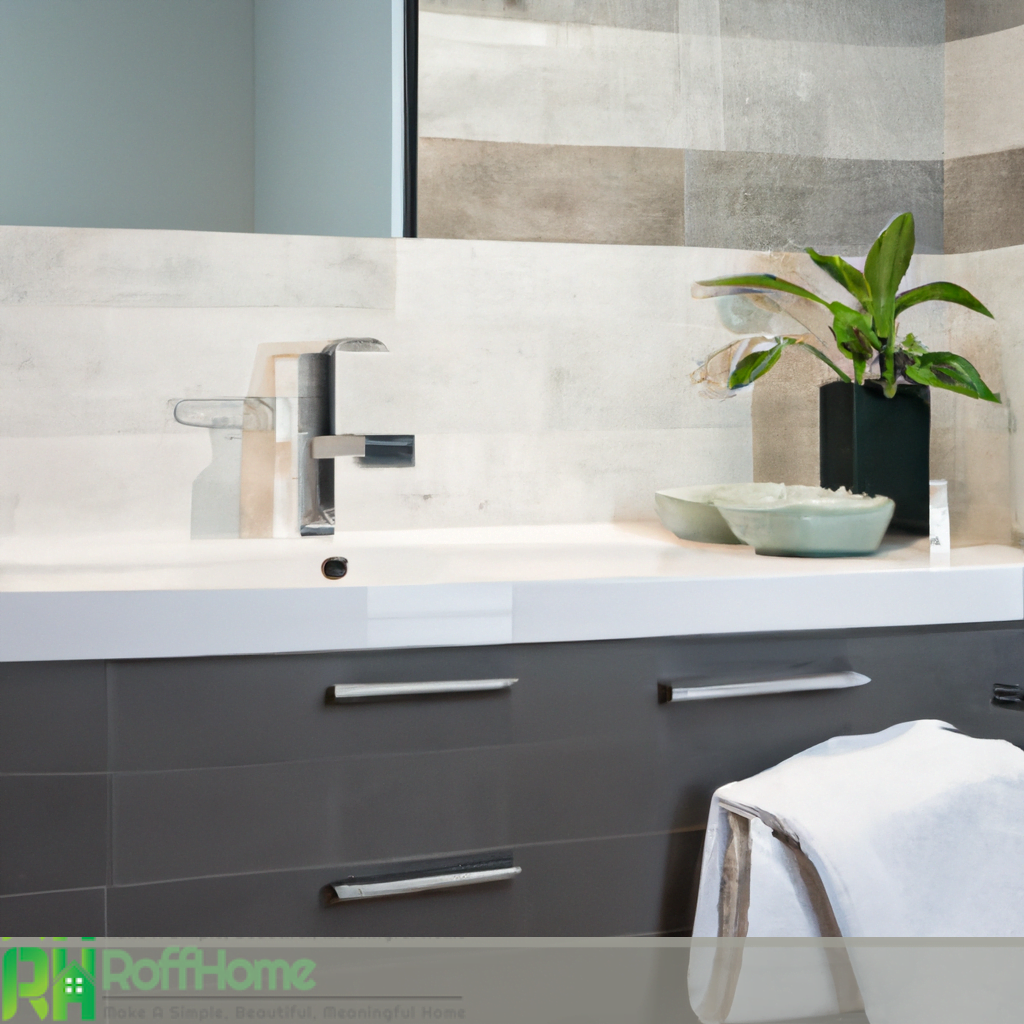Creative Step Down Between Rooms for a Chic and Functional Open Floor Plan
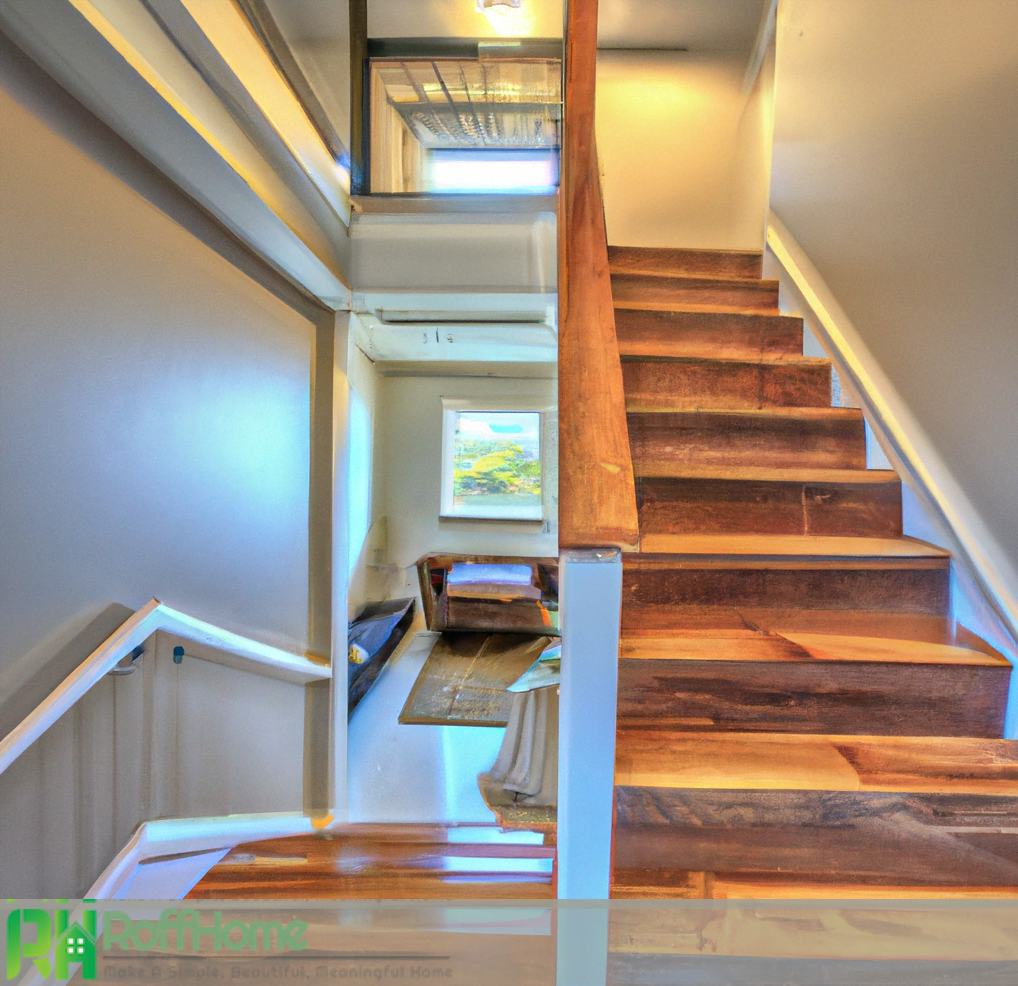
A step down between rooms is a design feature that adds depth, contrast, and visual appeal to a home. An architectural element creates a subtle yet significant transition between rooms of different elevations, creating a more dynamic and interesting space. This design element can be found in many modern homes, particularly open-concept living spaces.
The design considerations for creating a step down between rooms can be complex, and safety is an important factor to consider, particularly for families with children and older adults. The materials used for the transition can also affect the functionality and aesthetic appeal of the space. Lighting and decor can be used creatively to accentuate the step-down and make it a focal point.
In terms of construction and renovation, adding a step down between rooms can present challenges, but it can also enhance accessibility and mobility within a home. Careful consideration must be given to the gradient, depth, and threshold to ensure safety and ease of use.
What is a step down between rooms, and why does it exist?
A step down between rooms is a design element that creates a visual transition between two rooms with different elevations. It is a small yet significant feature that adds depth, contrast, and visual interest to a home. The step-down can be a few inches or several feet, depending on the home’s design.
The purpose of a step down between rooms is to create a subtle separation between the different areas of a home while still maintaining an open-concept design. This design feature is particularly popular in modern homes, where open-concept living spaces are increasingly sought after. The step-down between rooms can create a sense of flow and continuity between different home areas while still providing some visual separation.
A step-down between rooms can also be used to enhance the functionality of a space. For example, it can create different levels in a home theater or media room for a better viewing experience.
However, safety is important when designing a step-down between rooms, particularly for families with children or older adults. The transition should be marked and well-lit to avoid accidents.
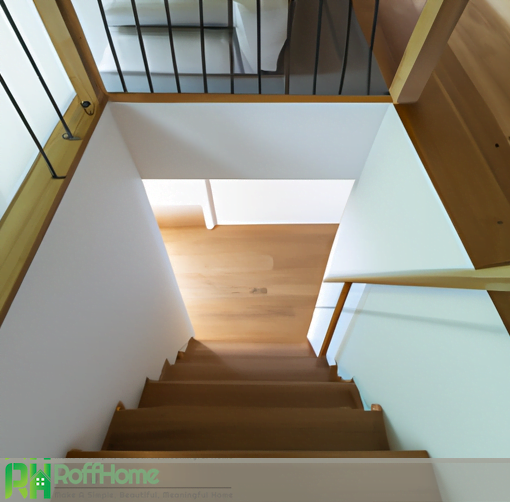
Popular design trends for step-down transitions between rooms in modern homes
In modern homes, step-down transitions between rooms have become increasingly popular to create a seamless flow between different living spaces while providing some visual separation. Here are some of the popular design trends for step-down transitions between rooms in modern homes:
Use of natural materials: Natural materials such as wood, stone, or concrete for the step-down transition are popular in modern homes. These materials add a natural and rustic look to the space and create a seamless transition between different rooms.
Minimalist design: Minimalist design is a popular trend for step-down transitions between rooms. This design style emphasizes simplicity and clean lines, creating a seamless and modern look that is stylish and functional.
Lighting: Lighting is an important aspect of the step-down transitions between rooms. Using recessed lighting or LED strips under the transition can create a dramatic effect and add to the visual appeal of the space.
Contrasting colors: Using contrasting colors between the different levels of the step-down transition can create an eye-catching and dynamic effect. This can be achieved using paint, tiles, or other materials.
Sunken living room: A sunken room is a popular trend for step-down transitions between rooms. This design creates a cozy and intimate seating area that is visually separated from the rest of the room.
Multi-level transitions: Multi-level transitions are a popular trend in modern homes. This design incorporates multiple step-down transitions between rooms, creating a unique and visually appealing space.
Designing with step-down between rooms: Incorporating this feature into the home’s layout
Designing with a step down between rooms can be a challenging yet rewarding task. Incorporating this feature into a home’s layout requires careful consideration of several factors to ensure that it is both functional and aesthetically pleasing. Here are some tips for designing with a step down between rooms:
Determine the purpose: Before designing the step-down, it is important to determine its purpose. Will it be used to create a separation between different living spaces, or will it be used to create a sunken living room or entertainment area? This will help you determine the appropriate height and depth of the step-down.
Please choose the right materials: The materials used for the step-down should be carefully chosen to ensure they are sturdy, durable, and visually appealing. Popular materials for step-downs include wood, stone, and concrete.
Consider lighting: Lighting is an important design aspect with a step down between rooms. The transition should be well-lit to ensure safety and highlight the design feature. Recessed lighting or LED strips can be used to create a dramatic effect.
Safety plan: Safety should be a top priority when designing with a step-down between rooms, particularly for families with children or older adults. The transition should be marked and easy to see, and the materials used should be slip-resistant.
Consider the overall layout: The step-down should be incorporated into the home’s overall layout in a way that creates a sense of flow and continuity. It should not feel like an afterthought but rather a deliberate design choice that enhances the functionality and aesthetic appeal of the space.
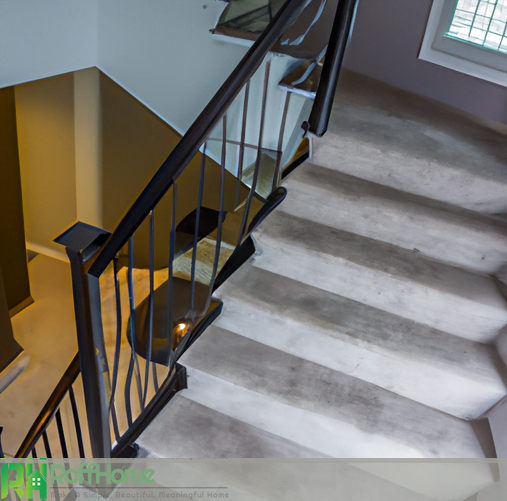
Creative ways to incorporate step-downs between rooms in interior design
Step-downs between rooms can be a unique and creative design feature for interior design. Here are some creative ways to incorporate step-downs between rooms in interior design:
Create a focal point: A step down between rooms can be used as a focal point in a space. By incorporating contrasting materials, colors, or lighting, the step-down can become a visual centerpiece that adds interest to the room.
Add depth and dimension: A step down can add depth and dimension to a space, particularly in open-concept homes. By creating different levels and elevations, the step-down can define different living spaces and add interest to the overall design.
Create a cozy seating area: A sunken living room is a classic way to incorporate a step down into interior design. Lowering the seating area can make the space cozy and intimate, creating a perfect spot for lounging or entertaining.
Add texture: The materials used for the step-down can add texture to the space, creating a tactile and visually interesting design feature. For example, a stone or brick step-down can add a natural and rustic feel to the space.
Incorporate artwork: A step down can be a great spot to display artwork, particularly if it is used as a focal point in the space. Incorporating artwork into the design, the step down can become a unique and visually appealing feature in the room.
Use contrasting shapes: Using contrasting shapes can create a visually interesting step-down design. For example, incorporating a round or curved step down in a space with predominantly straight lines can create an eye-catching and dynamic effect.
Common mistakes to avoid when installing flooring transitions
Flooring transitions are an important aspect of home design, providing a smooth and safe transition between different types of flooring. However, there are some common mistakes that homeowners and contractors make when installing flooring transitions.
Incorrect measurements: One of the most common mistakes when installing flooring transitions is incorrect measurements. This can lead to gaps or uneven transitions between flooring types. Make sure to measure carefully and accurately before installing the transition piece.
Using the wrong materials: Another common mistake is using the wrong materials for the transition. It’s important to choose a transition piece that is appropriate for the types of flooring being transitioned and for the level of foot traffic in the area.
Poor installation: Poor installation is another common mistake when installing flooring transitions. Follow manufacturer instructions carefully, and ensure the transition piece is securely installed to prevent tripping hazards.
Not considering the height difference: A common mistake is not considering the height difference between the two types of flooring. This can lead to tripping hazards or uneven transitions. Make sure to choose a transition piece that accommodates the height difference between the two types of flooring.
Not accounting for expansion and contraction: Different types of flooring may expand and contract differently, which can lead to issues with the flooring transitions. Make sure to account for this by leaving appropriate expansion gaps and using transition pieces designed to accommodate movement.
Neglecting aesthetics: While functionality is important, neglecting aesthetics is another common mistake when installing flooring transitions. Make sure to choose a transition piece that complements the space’s overall design and is visually appealing.
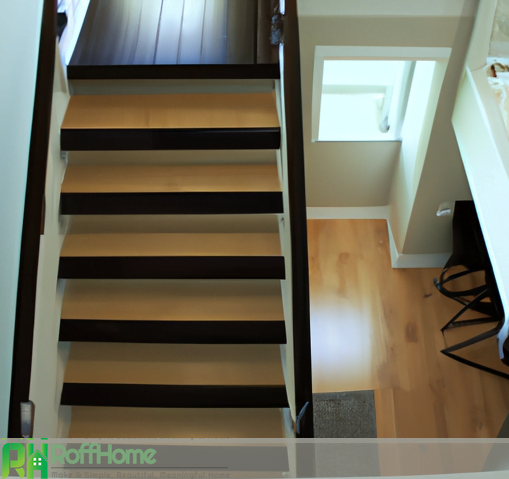
Installation and construction considerations for step-downs between rooms
Several installation and construction considerations should be considered to ensure safety and functionality when designing and constructing step-downs between rooms. Here are some of the key considerations:
Structural support: Step-downs require structural support to ensure safety and stability. This may involve reinforcing the floor structure to support the weight of the step-down or adding additional support columns or walls.
Elevation and gradient: The height and slope of the step down should be carefully considered to ensure it is safe and easy to navigate. The step-down should not be too steep or too high and should be visible to prevent tripping hazards.
Materials: The materials used for the step-down should be durable, slip-resistant, and easy to maintain. Popular materials for step-downs include hardwood, tile, and concrete.
Lighting: Adequate lighting is essential for safety and functionality, particularly in areas with a step-down. Make sure to install lighting that is both functional and visually appealing.
Accessibility: When designing step-downs, it’s important to consider accessibility for people with mobility issues or disabilities. This may involve incorporating ramps, handrails, or other accessibility features to ensure everyone can safely and easily navigate the space.
Contrast: Incorporating contrast between the step-down and surrounding flooring can help to make the step-down more visible and prevent tripping hazards. This may involve using contrasting colors, textures, or materials.
Aesthetics: Finally, it’s important to consider the aesthetic impact of the step down on the overall design of the space. The step-down should complement the surrounding decor and contribute to the room’s visual appeal.
Using lighting and decor to accentuate a step down between rooms
Using lighting and decor to accentuate a step-down between rooms can add visual interest and functional safety to your home. Here are some tips and ideas for using lighting and decor to accentuate a step down:
Highlight the step-down with lighting: Install recessed lighting along the edge of the step-down to highlight it and make it more visible. This can help prevent tripping hazards and add a stylish touch to the space.
Use accent lighting to draw attention: In addition to recessed lighting, consider using accent lighting to draw attention to the step-down. This could include pendant lights, wall sconces, or table lamps highlighting the space.
Incorporate decor elements: Decor elements can also help to accentuate the step down. Consider using a rug or runner that spans the length of the step-down or placing decorative items such as plants or artwork on either side to draw attention to it.
Use color and texture: Incorporating color and texture can also help to accentuate the step-down. Choose contrast flooring materials, or use paint or wallpaper to create a focal point around the step-down.
Incorporate a focal point: Use the step down as a focal point to create visual interest in the space. This could involve adding a unique lighting fixture or artwork above the step-down or using the space as a display area for decorative items.
Add safety features: Finally, it’s important to consider safety when accentuating a step down with lighting and decor. Use slip-resistant flooring materials, and ensure lighting is bright enough to prevent tripping hazards.
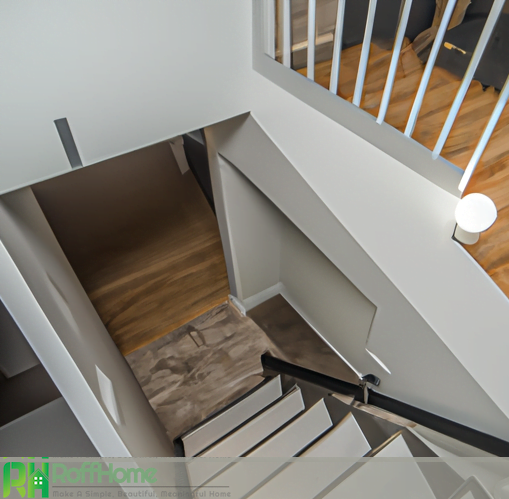
Maintaining and repairing step downs between rooms: tips and tricks for upkeep
Maintaining and repairing step-downs between rooms is important to keep them in good condition and ensure safety. Here are some tips and tricks for upkeep:
Clean regularly: Regular cleaning is essential to maintain the condition of step-downs. Use a broom or vacuum to remove debris and dirt and a damp mop to clean the surface.
Repair any damage: Any damage, such as cracks or chips, should be repaired promptly to prevent further deterioration. Depending on the severity of the damage, repairing the flooring may involve patching, filling, or replacing sections of the flooring.
Address unevenness: Unevenness in the step-down can create tripping hazards. If you notice any unevenness, it’s important to address it promptly. This may involve adjusting the height of the step or re-leveling the flooring.
Seal the flooring: Sealing the flooring can help to protect it from moisture and prevent stains. This is especially important in areas such as bathrooms or kitchens where spills are more likely to occur.
Replace worn flooring: If the flooring on the step-down is worn or damaged beyond repair, it may be time to replace it. This can be a good opportunity to update the look of the space and choose a flooring material that better suits your needs and style preferences.
Consider professional maintenance: In some cases, professional maintenance may be necessary to keep step-downs in good condition. This could include deep cleaning or refinishing the flooring.
Pros and cons of having a step down between rooms in the home
A step-down between rooms can add visual interest and create a unique design feature in a home. However, there are pros and cons when deciding whether to incorporate a step-down into your home’s design.
Pros:
Aesthetics: A step-down between rooms can add depth and contrast to a space, creating a visually appealing design element.
Definition: It can clearly distinguish between two spaces while maintaining an open-concept feel.
Focal point: It can draw attention to a specific area in the room and create a focal point.
Accessibility: A gentle slope or step-down can be easier to navigate for individuals with mobility issues than a traditional threshold.
Unobstructed views: It can create an unobstructed view between two spaces, making a home more open and spacious.
Cons:
Safety concerns: A step-down can pose a tripping hazard without proper lighting and attention to safety.
Expensive construction: Creating a step-down can be more complicated and expensive than a traditional threshold.
Furniture placement can limit furniture placement and require additional planning when designing a room.
Requires extra care: A step-down may require additional care and cleaning to maintain the flooring and prevent damage.
Not suitable for all homes: A step-down may not be feasible in some homes due to the layout or structural limitations.
A step-down between rooms can add depth and interest to a home’s design. Still, it also requires careful planning and attention to safety. By considering the pros and cons, design trends and installation considerations, homeowners can make informed decisions about incorporating this feature into their homes.

